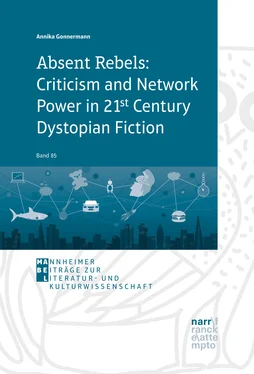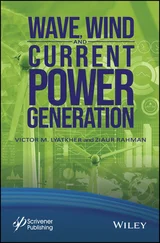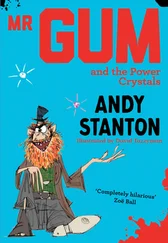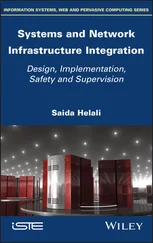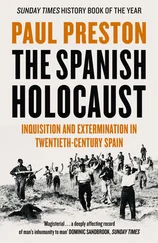Striking, however, is that most post-apocalyptic fiction – other than dystopian fiction, for instance – does not work directly within the mode of extrapolating from the present. As Susanna Layh observes, most end time narratives from the late 20 thcentury do not establish clearly identifiable causal-logical links between the pre- and post-apocalyptic society, but rather rely on general themes such as diseases and pandemic viruses as well as natural disasters such as earthquakes, flooding, or meteoric impacts (cf. 181). Thereby they ignore the search for explanations how the present could possibly turn into this future and thereby force the reader to direct her attention away from the search for causality towards the diagnosis of human relationships after the catastrophe (ibid.; see also Schoßböck 65, 85–96).4
Despite their difference in interest and objective, post-apocalyptic fiction and dystopias are often mixed up and mistaken for each other, especially in the context of mainstream media. Even Margaret Atwood, acclaimed author of dystopian and post-apocalyptic fiction, conflates the two genres: in an interview, she once said “[a]ll dystopias are telling you is to make sure you’ve got a lot of canned goods and a gun” (Interview with Higgins), thereby falsely attributing some sort of eschatological quality to dystopian fiction. Kunkel tries to formulate the differences between the two genres by hinting at the nature of the future described: on the one hand, “[t]he end of the world or apocalypse typically brings about the collapse of order; dystopia, on the other hand, envisions a sinister perfection of order. […] dystopia is a nightmare of authoritarian or totalitarian rule, while the end of the world is a nightmare of anarchy” (“Dystopia” 90, emphasis in the original). He thus correctly identifies the nature of “order” in the two respective societies as the defining element.
Defining Utopia, Eutopia, and Dystopia
Although most people seem to have an intuitive understanding about the relational characteristics of eutopian and dystopian writing, these concepts are notoriously difficult to pin down in practice. This is due to two reasons in particular: their linguistic status as neologisms, and their generic co-dependency. In order to approach a reliable definition of dystopia, it is advisable to begin by analysing the etymological connection between eutopia and dystopia, starting with the former: ‘utopia’ has entered the English language as a book title, namely Thomas More’s Utopia, published in 1516. Originally used as a word play with the Greek language and its English pronunciation, i.e. between ‘ou-topos’ (no place) and ‘eu-topos’ (good place; cf. Seeber, Selbstkritik 55),5 the word has migrated from one individual work to denominate the entire genre (cf. Assheuer 45; also Weber 5).6 Since its beginnings, utopia has commonly been used within literary studies to denote the description of an ideal society fashioned according to the views and opinions of its author.7 By contrast, dystopia is a much younger term. It was first documented in 1868, when John Stuart Mill used the term in a speech to the House of Commons (cf. Shiau). Its morphological structure, “dys” meaning “bad, abnormal, and diseased” (Vieira 16), and “topos” meaning place, yet is like Thomas More’s original neologism.
While the term utopia/eutopia has generally been accepted as proper terminology, scholars still debate about the appropriate denomination of its darker twin: numerous terms compete its supreme use within literary studies. Interestingly, these terms still use the neologism ‘utopia’ as their root (cf. Vieira 3). Konrad Tuzinski offers his readers a collection of the following terms, ‘pessimistic utopia,’ ‘apocalyptic utopia,’ ‘inverted utopia,’ or ‘Groteskutopie,’ before eventually settling for the term ‘devolutionary utopia’ himself (cf. 6f.); Peter Fitting records the use of ‘negative utopia’ as well as ‘anti-utopia’ (cf. “Short History” 126), while Elena Zeißler summarises the last 50 years of dystopian research and confusion of terminology by gathering even more possible terms – among them ‘Gegenutopie,’ ‘Mätopie,’ or ‘Cacotopia’ (cf. 15).8 Yet, Zeißler, eventually, settles for the term ‘dystopia,’ thereby following an emerging consensus within utopian scholarship. ‘Dystopia’ is not only recognised by a majority of readers and researchers alike but also “denotes a broader concept, allowing criticism of utopia, but also [deals] directly […] with contemporary social evils and posits thus an independent term far less linked with utopia/eutopia” (Mohr, Worlds 28f.) – an advantage that other concepts lack for they are morphologically too close to the original neologism.
Increasingly, ‘dystopia’ has become the standard term. This consensus is reflected in the research by the most influential dystopian scholars, who all settle on the term, when attempting to define the genre boundaries. In Scraps of the Untainted Sky (2000), Tom Moylan defines dystopia according to its alignment to “militant pessimism [and] resigned pessimism,” whereas anti-utopia is defined by “despair” (157). However, he is careful not to give the impression of constructing a binary opposition between utopia and anti-utopia. Moylan argues for a continuum which stretches between the two poles – with dystopia being the “literary form that works between these historical antinomies and draws on the textual qualities of both subgenres” (ibid. 147, emphasis in the original). Whereas Moylan defines ‘dystopia’ as a hybrid structure, Lyman Tower Sargent reserves the term for a clear category of works. In “The Three Faces of Utopianism Revisited” (1994), he writes that ‘positive utopia’ is defined as “a non-existent society described in considerable detail and normally located in time and space that the author intended a contemporaneous reader to view as considerably better than the society in which that reader lived” (9), whereas ‘dystopia’ is defined as “a non-existent society […] intended [to be viewed] as considerably worse” (ibid.). Rejecting the idea of perfection as a definitional category because “there are in fact very few eutopians that present societies that the author believes to be perfect” (ibid.), he claims that the defining characteristic for his categories ‘eutopia,’ ‘dystopia,’ ‘utopian satire,’ ‘anti-utopia,’ and ‘critical utopia’ is authorial intention – while being aware that one can never be absolutely sure about it – and diminishes the readers’ role in assessing the text.9
Although both Moylan and Sargent offer convincing definitions for both ‘eutopia’ and ‘dystopia,’ this analysis follows the hands-on definitions offered by Darko Suvin, who constructs a taxonomy based on his ‘radically different’ principle. He defines utopia as “the construction of a particular community where socio-political institutions, norms, and individual relationships between people are organized according to a radically different principle than in the author’s community” (Suvin, “Theses” 188, my emphasis), thereby reserving ‘utopia’ as a categorial denominator that includes both eutopian and dystopian writing. He then goes on to differentiate between ‘eutopia,’ “organized according to a radically more perfect principle than in the author’s community” and ‘dystopia,’ “organized according to a radically less perfect principle” (ibid. 189). Yet again, the category of dystopia can be subdivided into ‘anti-utopia,’ a form that is “explicitly designed to refute a currently proposed eutopia” (ibid.), formulating a counter statement concerning utopias, and ‘simple dystopia,’ a more “straightforward dystopia, that is, one which is not also an anti-utopia” (ibid.). Suvin thus bases his taxonomy of dystopias on the question whether they explicitly attack eutopian fiction or not, thereby providing the most suitable theoretical framework for this project.
Читать дальше
